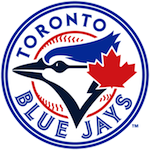Yep, the big one is out. Jeter the only new guy to be an obvious pick. Jays on the ballot are Roger Clemens, Scott Rolen, Jeff Kent, Omar Vizquel.
So who is on the ballot this time?
Rookies of note...
Derek Jeter : obviously getting in, the question is what percentage? I'm expecting 90's but not 100% - could be in the 80's if enough voters hated his defense.
Big drop...
Bobby Abreu: was very good for a long time, but other than his 60 WAR not a HOF'er
Jason Giambi: was one of the best at one point, but PED's and a few shortened seasons got him.
Cliff Lee: once one of the best pitchers around, at 29 an easy Cy Young winner, but just 67-52 after that (lots of injuries). His 143 wins guarantees he doesn't get in.
Adam Dunn: once the king of K's, striking out 222 times one year while still having a 114 OPS+ He'd walk 100+ times a year and hit 30+ HR
Lots of other guys too, but those are the ones who caught my eye.
Returning for the last time is Canadian Larry Walker - 54.6% last time, lets hope a push is on to get him in. Very few got 50%+ and didn't get in.
4 guys are on their 8th (of a maximum 10) time. Barry Bonds, Roger Clemens, Curt Schilling, Sammy Sosa. All should've been in long ago (if one ignores PED's). Schilling isn't accused of PED use but was apparently a jerk so that has cost him, bloody sock or no.
Schilling had the most votes without getting in last year at 60.9%. Clemens, Bonds, and Walker all were over 50% as well.
Omar Vizquel for reasons beyond me got 42% last time and is a contender but really should drop this year with the obviously far superior Jeter on the ballot. Just twice reached 4 WAR (once dead on it), just once got MVP votes (came in 16th), 3 ASG, 10 Gold Gloves. I don't see him as anywhere near the HOF.
Summary of the stats can be found at https://www.baseball-reference.com/awards/hof_2020.shtml - my favorite place for them
The vote tracker is at https://onedrive.live.com/view.aspx?resid=F2E5D8FC5199DFAF!17003&ithint=file,xlsx&authkey=!ALD8BEbKmTajwcI - again lots of fun every year to follow.
So, given a 10 man limit, who would each of you vote for? My personal one would be Clemens, Bonds, Schilling, Walker, Jeter, Scott Rolen, Jeff Kent. Todd Helton is always tempting as are Andy Pettitte, Manny Ramirez,




